Facts & Info - Floor treatments
Watch this product and we will notify you once it is back in stock.
The product is now watched
We will notify you once the product is back in stock again.
Your personal information is processed in accordance with our privacy policy.
Facts & Info - Floor treatments
Have you uncovered an old wood floor, or have you just added a new untreated floor and wonder how it should be treated? Opportunities are many - we help you clarify the concepts and choose the right option!
Linseed soap
A traditional Scandinavian soap floor is undoubtedly very beautiful. Properly done, it is both resistant and easy to maintain. Soap scrubbed floors are an old traditional way of treating wooden floors that have done a comeback in recent years. The result will be a bright, warm and natural floor that feels soft under your feet.
There are several different floor treatments depending on the linseed soap to be used. We recommend a treatment with a strong basic soap intended for proper floor treatment (our articles 105-020 and 105-023). The floor should be saturated with the soap that will dry on it. Then swab the floor with cold water. The soaked soap forms a solid gel layer in the surface texture of the wood. When mopping the floors with cold water, the floor gives off a small portion of the soap which acts as a detergent. This treatment lasts 3-5 years depending on wear and tear. The floor will brighten in time and floors made of spruce are always lighter than pine.
Advantage: Provides a very beautiful result. Easy to do yourself and to improve in time.
Disadvantage: Requires repeated treatments.
Oiled floors
Oil penetrates the wood and impregnates it while maintaining the feeling of natural wood. However, the quality of different oil in the market varies, so it’s important to choose a good product. The oil treatment in our assortment is made from refined linseed oil and consists of 100% of oxidizing fatty acids. When the oil is polished into the floor with fine sandpaper or polishing machine, the oil draws deep into the wood and the pores of the wood are filled, leaving a hard and dirt-repellent surface that is comfortable to walk on. It is easy to improve the areas exposed to greater wear and tear.
Advantage: Very good resistance to stains. Relatively easy to do yourself, naturally and beautifully. Can be easily adjusted if required.
Disadvantage: Requires maintenance on the surfaces that are worn more to maintain the protection and so that the floor does not look dry.
Linseed wax
There are many different floor wax products on the market. Many contain toxins and are not always that good either for humans or for the environment. We strongly recommend Allbäcks Linseed wax, which is free of chemicals, durable and affordable. Linseed wax gives a durable and water-repellent surface that is easy to clean. The wax penetrates the wood while protecting the surface. You can easily maintain areas that are extra worn afterwards. Only one layer is required. Read more about how we treated our floor in the store using linseed wax.
Advantages: Quick and easy method that gives a durable surface. Linseed wax is environmentally friendly and has good resistance to water and dirt.
Disadvantages: Requires maintenance after approximately 3-7 years due to wear. Some substances can dissolve the wax, such as citric acid, vinegar and alcohol.
Varnished floors
Varnish is a modern treatment that started to be common in the 60's. Varnish provides a durable surface that is resistant to both moisture and dirt since the lacquer acts as a protective layer on the floor surface. Before the floor is treated, it must be completely dust-free to avoid any marks in the paint. The whole process is quite advanced and should be done by professionals. You can choose between glossy and matte finish. Most varnish treatments get dull after a while, but a popular treatment is to first stain the floor to the desired color and then put on a matte varnish that resembles oil-treated floor in appearance.
Advantages: Easy-to-clean surface that doesn’t dry out. Needs no maintenance in the near future (until the varnish begins to crack).
Disadvantage: Many of today's varnishes are hazardous. Wet varnish that penetrates the surface can cause stains that are difficult to get rid of. If you have had a lot of scratches in the varnish after some years, you can be forced to sand the entire floor.
Linseed oil paint
For a more drastic change of a wooden floor, you can paint it. This was a common treatment method in the past. They often painted spruce and pine floors in different brown shades to create an appearance of more exclusive wood such as oak and mahogany. Another popular alternative was painting checkered patterns. The paint both protects, smooths out and hides flaws. For results as sustainable as possible, we recommend thin layers of linseed oil paint. The possibilities for a unique-looking floor are endless and the results are easy to maintain. The floor will age beautifully, and you can easily fill in scratches as they occur. Use linseed oil to polish the floor after 5-7 years to refresh the color and extend durability.
Advantages: A beautiful and efficient way to renew and protect the floor. Good resistance to stains, easy to clean. Aging naturally. '
Disadvantages: Three layers of paint should be applied, so this is the treatment method that is most time-consuming.
Stain and chemical stripping
Staining the floor is the same as pigmenting it and is just like painting it, a great way to hide flaws and marks in a worn floor. However, the stain does not protect the floor, so after it has dried, you need to treat it with wax or varnish to protect the floor. There are also floor oils with ready-mixed stain.
Chemical stripping is used in cases where you do not want wood floors such as pine wood to turn yellow.. You simply remove the natural aging process of the wood. Chemical stripping is doubtful from an environmental and health perspective and the surface needs to be treated afterwards with soap, oil or wax.
Tip!
Pressure damage caused by, for example, high-heeled shoes is quite easy to fix! Just place a wet cloth on the damage and after a while, the fibers rise again and the damage is no longer visible. This only works as long as the fibers are intact. Sharp objects that have cut off the wood fibers cause permanent damage and would need to be sanded again.
Related products
-
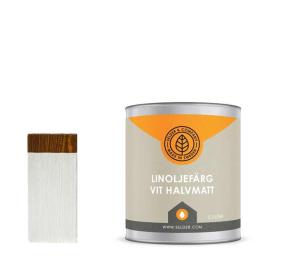
Linseed Oil Paint Selder & Co - Silver Grey
Silver Grey. 0.45L, 0.9L or 4.5L. Linseed oil paint for most surfaces indoor and outdoor.
105-726-HM-0.45L
255 SEK / pc.- Stock status
- 7-10 weekdays
-

Linseed Oil Paint Selder & Co - Lime Green
Lime Green. 0.45L, 0.9L or 4.5L. Linseed oil paint for most surfaces indoor and outdoor.
105-728-HM-0.45L
255 SEK / pc.- Stock status
- 7-10 weekdays
-
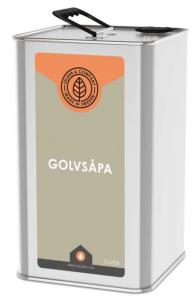
Linseed soap - Floor soap original 5 L
5-liter powerful floor soap for the treatment and maintenance of traditional wooden floors. Made of fatty acids from linseed oil.
105-020
495 SEK / pc.- Stock status
- 33 pc. in stock
-

Linseed soap - Floor Soap Original 1 L
1-liter powerful floor soap for treatment and maintenance of traditional wooden floors. Made of fatty acids from linseed oil.
105-023
120 SEK / pc.- Stock status
- 14 pc. in stock
-
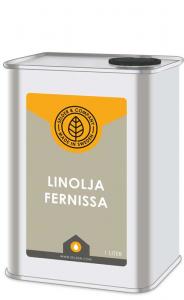
Linseed oil - Varnish 1 L
1-liter linseed oil varnish for maintenance and for obtaining a high gloss surface on already treated surfaces.
105-015
275 SEK / pc.- Stock status
- 8 pc. in stock
-
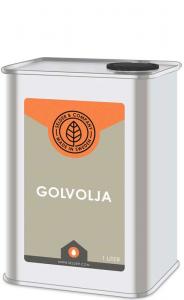
Linseed oil - Floor oil 1 L
1-liter linseed oil especially suitable for floors.
105-008
275 SEK / pc.- Stock status
- 6 pc. in stock
-

Linseed oil - Floor oil 5 L
5-liter linseed oil especially suitable for floors.
105-009
1 185 SEK / pc.- Stock status
- 5 pc. in stock
-
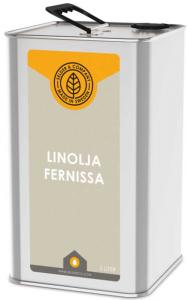
Linseed oil - Varnish 5 L
5 liter linseed oil varnish for maintenance and for obtaining a high gloss surface on already treated surfaces.
105-017
1 295 SEK / pc.- Stock status
- 2 pc. in stock
-

Linseed Oil Wax Allbäck - Natural
Linseed oil wax without pigments, made from linseed oil and beeswax. Covers 20-40 m² (215-430 ft²) per liter. Available in two sizes: 0.2 L or 1 L
105-550-0.2L
155 SEK / pc.- Stock status
- 51 pc. in stock
-
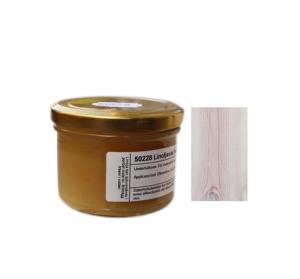
Linseed Wax Allbäck - White
White linseed oil wax. Made from linseed oil, beeswax, and pigment. Available in two sizes: 0.2 L or 1 L.
105-551-0.2L
155 SEK / pc.- Stock status
- 32 pc. in stock
-
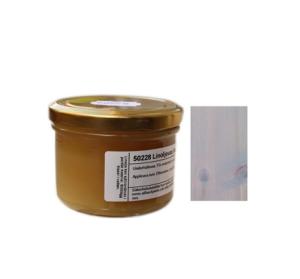
Linseed Oil Wax Allbäck - Grey
Linseed oil wax with grey pigment made from linseed oil and bee wax. Covers 20-40 sqm/L. Available in two sizes 2 dl or 1 litre.
105-552-0.2L
155 SEK / pc.- Stock status
- 5 pc. in stock
-

Linseed Oil Wax Allbäck - Brown
Linseed oil wax with brown pigment, made from linseed oil and beeswax. Covers 20-40 m² (215-430 ft²) per liter. Available in two sizes: 0.2 L or 1 L
105-553-0.2L
155 SEK / pc.- Stock status
- 7 pc. in stock
-
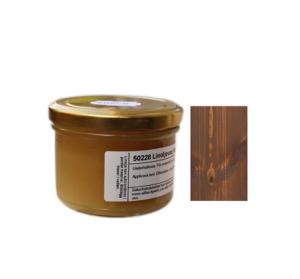
Linseed Wax Allbäck - Oak
Oak linseed oil wax. Made from linseed oil, beeswax, and pigment. Available in two sizes: 0.2 L or 1 L.
105-557-0.2L
155 SEK / pc.- Stock status
- 17 pc. in stock
-
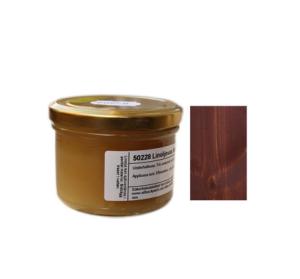
Linseed Wax Allbäck - Mahogany
Mahogany linseed oil wax. Made from linseed oil, beeswax, and pigment. Available in two sizes: 0.2 L or 1 L.
105-556-0.2L
155 SEK / pc.- Stock status
- 16 pc. in stock
-
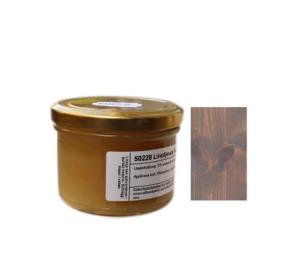
Linseed Wax Allbäck - Mole Grey
Linseed oil wax. Made from linseed oil, bee wax and pigment. Available in two sizes, 2 dl or 1 liter.
105-558-0.2L
155 SEK / pc.- Stock status
- 1 pc. in stock
Inspiration
✓ Low shipping fee
✓ Personalized support
✓ 30-day return policy
✓ Personalized support
✓ 30-day return policy
Description
Deliveries
- Shipping cost is based on weight, volume, and shipping method and is calculated at checkout.
- Items in stock are shipped from us within 2-5 business days.
- For customers outside the EU (excluding Norway), local taxes, duties, and customs fees may apply depending on your country's regulations, and will then be billed by the carrier.
Returns
- You have the right to cancel your purchase and make a return within 30 days from when you received your item.
- When invoking the right of withdrawal, you as the customer are responsible for the return shipping cost.
- For returns of pallets (bathroom porcelain, tiles, cast iron stoves etc.) and long goods (floors, moldings, trim, stucco, etc.), the return shipping is booked locally and can therefore be higher than the delivery cost.
- Special rules apply to custom-made goods and lumber, read more under our complete terms and conditions.
- Always contact support before making a return and if you have questions about our terms of purchase.
Complete Terms of Purchase




